As part of the celebration of the 70th anniversary of Topps baseball cards, we've asked fans (as well as our staff) to submit their all-time favorite baseball cards, and we've broken them down by team. We'll be revealing submissions regularly throughout the season, ranging from the famous to the weird, and everything in between.
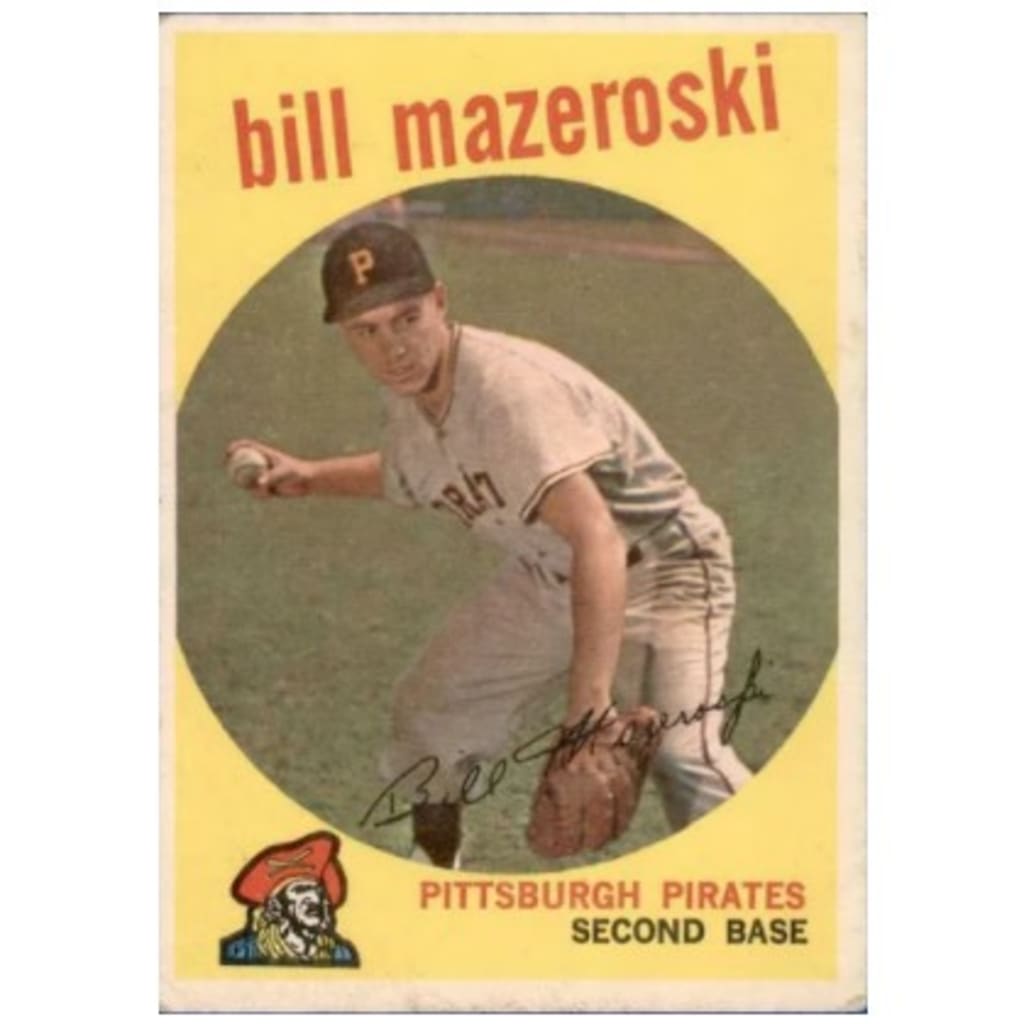
Bill Mazeroski, 1959 Topps
An eight-time Gold Glove Award winner, Mazeroski made the Hall of Fame largely on the strength of his excellent defensive reputation.
Curiously, though, his ‘59 Topps card is the only one the company released during his playing career that actually showed the second baseman doing what he did best, as journalist and author Bob Brill pointed out in his response to our survey. Wondering why, Brill got the answer from the man himself.
“Of all the Topps cards he had in 17 seasons, despite being the greatest fielding second baseman of all time, [his ‘59 card] is the ONLY one showing him fielding,” Brill wrote. “I asked him once, over drinks (he drinks vodka martinis), why not more with a glove. He said, ‘The Topps guys would always come out each year and when they went to take the photos they said just grab a bat so I did.’ He tried to pay for the drinks by the way and there was no way I was going to let a man who meant so much to me growing up, pay for the drinks. One of the kindest and nicest men ever.” -- Thomas Harrigan
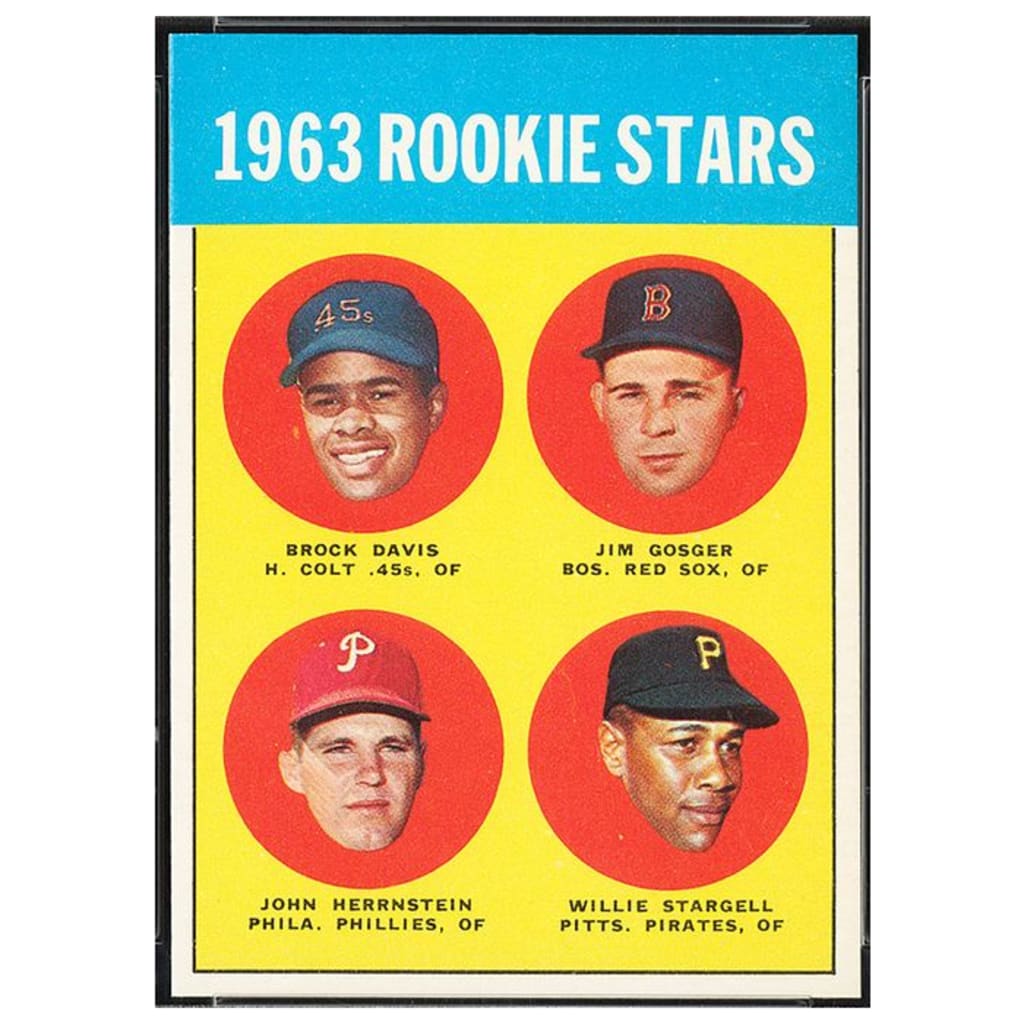
Iconic Pirates rookie card: Willie Stargell, 1963 Topps Rookie Stars
These multi-player rookie star cards are always classics, because you get to see who iconic players are paired with. Just for fun, take a look at the group of three alongside Stargell.
But pay the most attention to the future Hall of Famer in the bottom-right quadrant of the card. The 23-year-old Stargell was a year away from his big breakout in Pittsburgh, which kick-started a career in which "Pops" hit 475 home runs, won an MVP trophy and led both the 1971 Pirates and '79 "We Are Family" Pirates to Word Series championships.
Stargell spent his entire 21-year career with the Pirates, and this card takes you back to the very beginning.
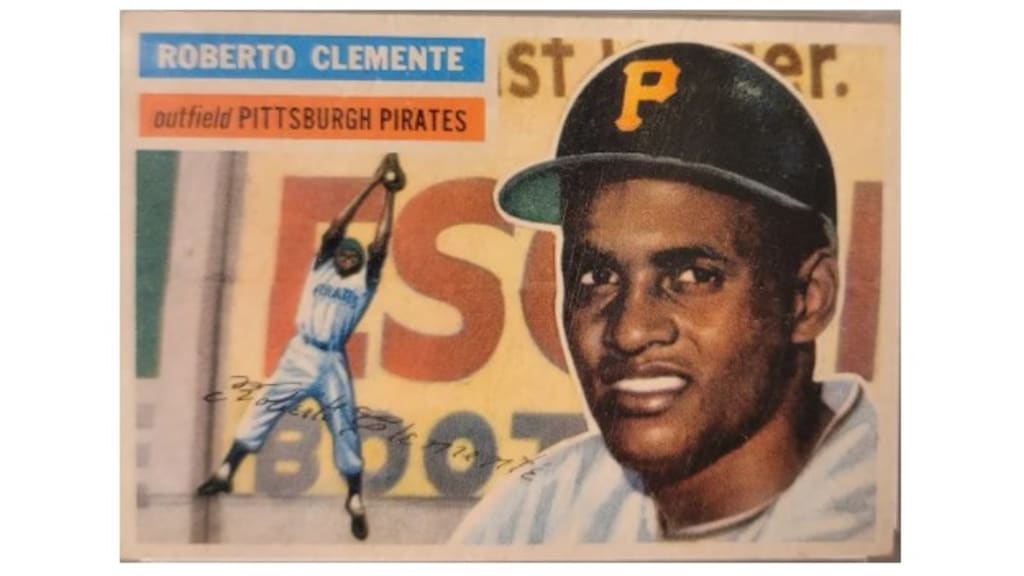
Roberto Clemente, 1956 Topps
The iconic ‘56 Topps set is recognizable by its classic design, which featured multiple illustrations of each player -- a headshot and an action shot.
Georgia’s Jerry G. Martin owns the entire '56 set and has a special affinity for Clemente’s card, being a longtime Pirates fan. Clemente's action shot shows the Hall of Famer making a leaping catch in right field, with the legendary Ebbetts Field in Brooklyn, N.Y., as a backdrop. The illustration was based on a real photo of Clemente.
“All the cards are awesome due to the picturesque detail,” Martin wrote. “My favorite card is Roberto Clemente. I have been a Pittsburgh Pirates fan since 1960. I learned about the Topps 1956 set when I was in middle school and traded a neighbor a bunch of models and cash from my paper route earnings to get a few cards. Then later wrote Topps and got the Pirates from that season. A few years ago, I purchased the remaining cards off eBay to make up the set.” -- Thomas Harrigan
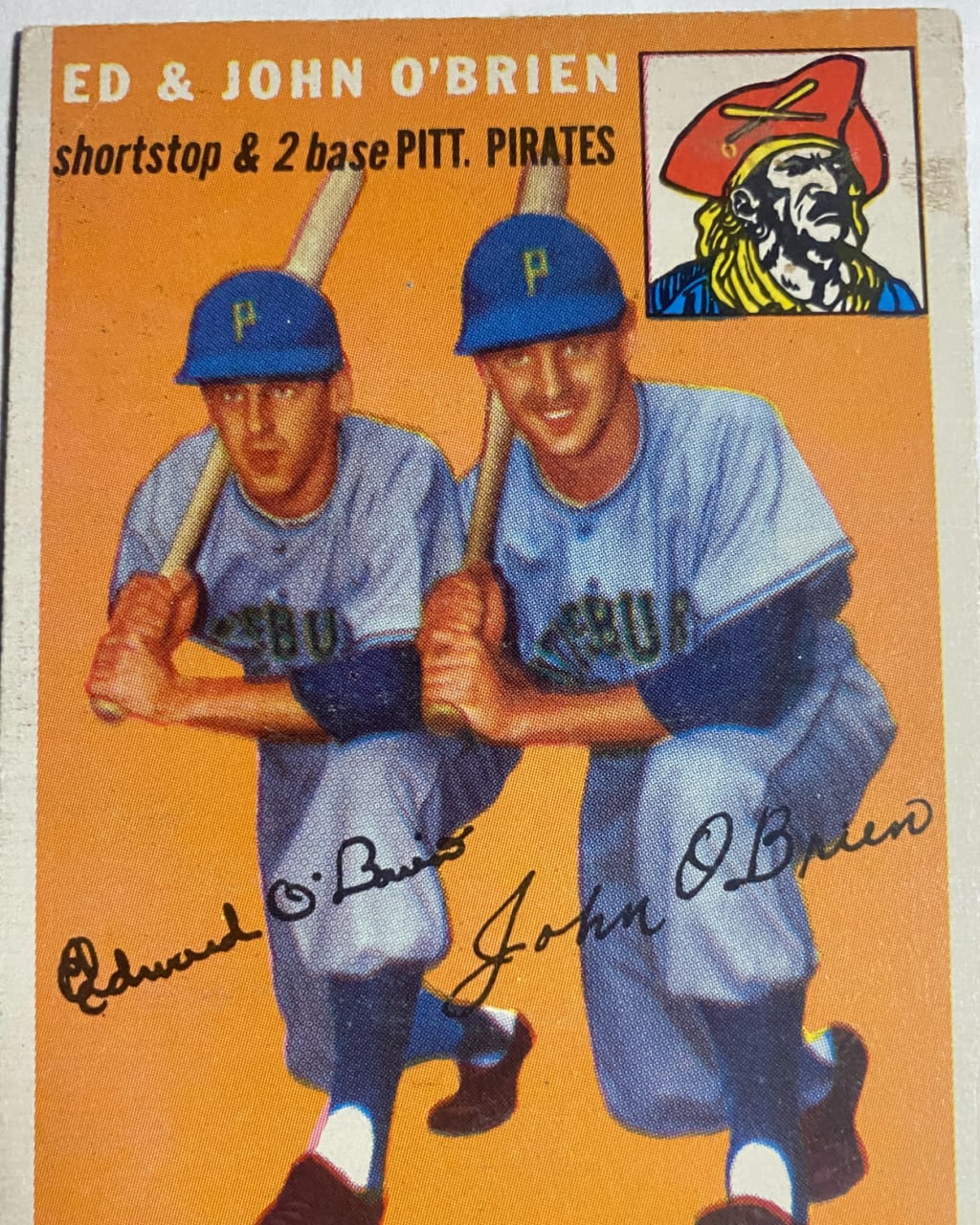
O’Brien twins, 1954 Topps
These guys had an amazing story.
Eddie O'Brien and Johnny O’Brien were great athletes in college, leading Seattle University's men's basketball team to the NCAA Tournament in 1953, and even beating the Harlem Globetrotters. That was only their first act. They then played Major League Baseball for the Pirates from 1953-58, manning the middle infield as double-play partners.
How cool is that?
“The first time I saw it I was spellbound by its weirdness,” wrote Marlton of New Jersey, who submitted the card in our survey.
Who wouldn’t be? -- Manny Randhawa
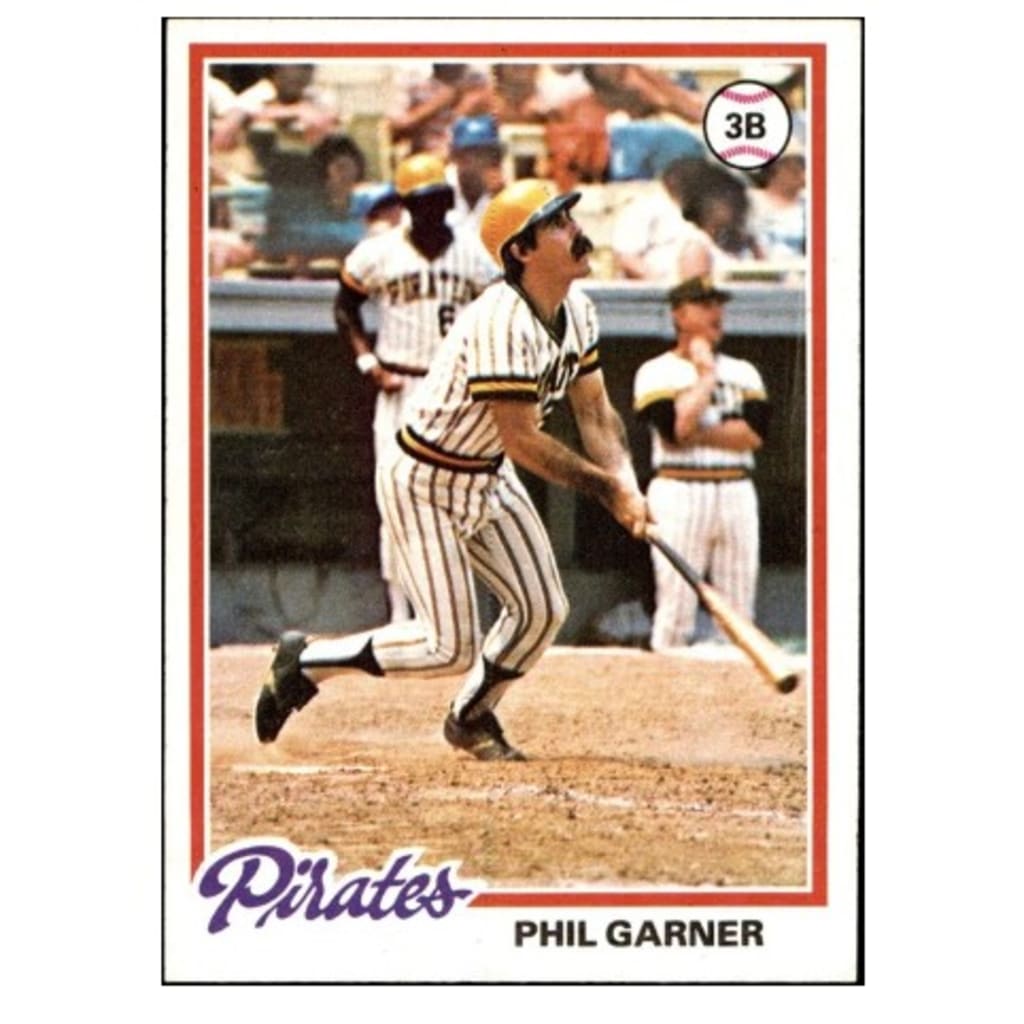
Best Pirates facial hair card: Phil Garner, 1978 Topps
While Phil Garner made three All-Star teams, hit 109 homers and stole 225 bases as a big leaguer, his most impressive attribute might have been his robust push broom mustache, which followed him from stop to stop during his 16-year career.
Besides those sweet late ‘70s Buccos uniforms, the first thing you notice when looking at Garner’s ‘78 Topps card, which was submitted by David Ratti, is that mustache. Even in an action shot that depicts Garner from a distance, the ‘stache is still prominent. -- Thomas Harrigan
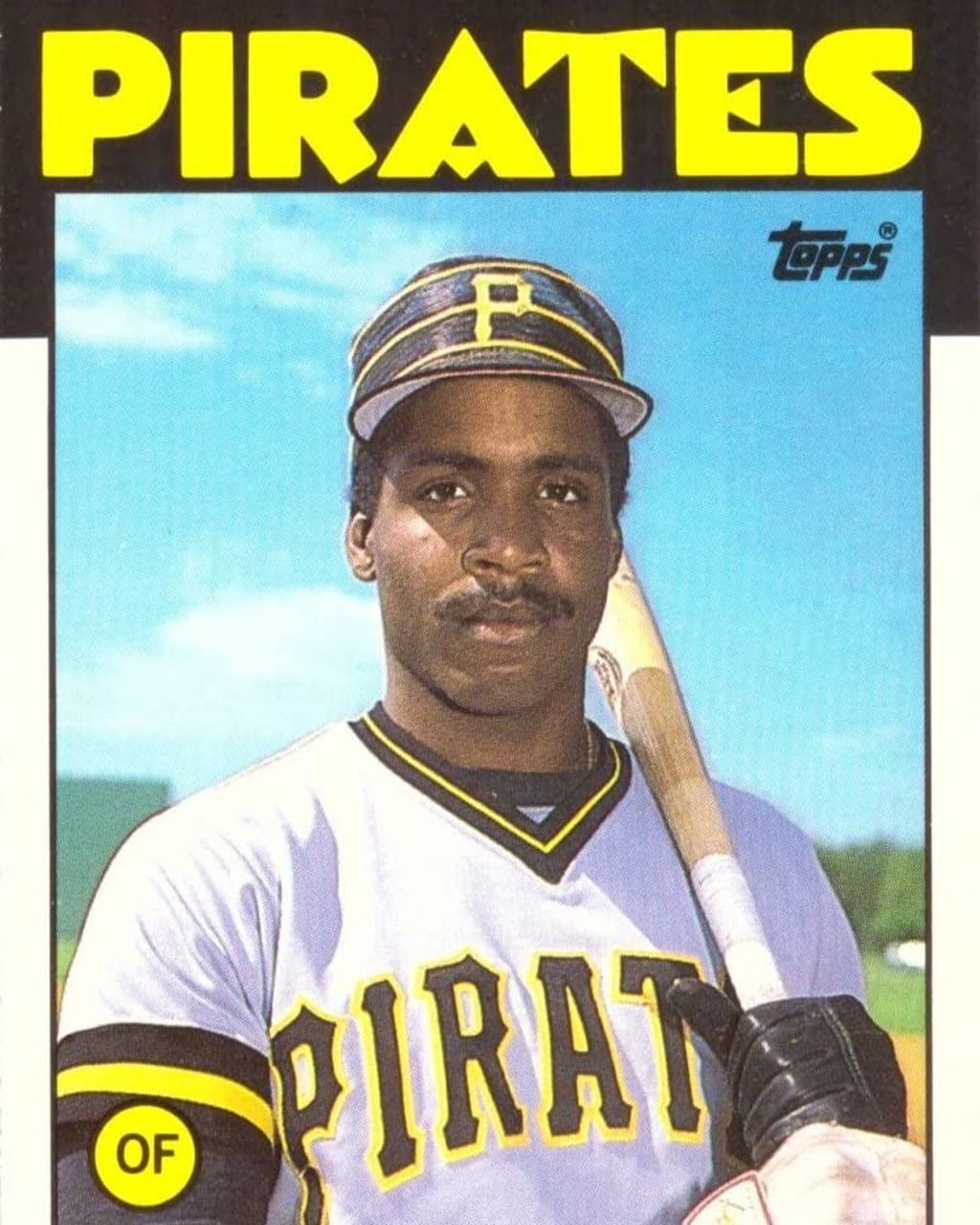
Barry Bonds, 1986 Topps
Though Barry Bonds will be remembered most for his incredible career with the Giants from 1993-2007, the superstar left fielder’s career began with the Pirates, who drafted him sixth overall out of Arizona State in 1985. Bonds had a great pedigree as the son of Bobby Bonds, who was a star outfielder in the 1960s and ’70s. But Barry put himself in a league of his own when he turned into the best all-around player in the game, winning two National League MVP Awards while with Pittsburgh in 1990 and ’92.
The future all-time single-season and career home run king was a hyped prospect and didn’t disappoint. And this 1986 Topps rookie card didn’t, either. The ’86 Topps set is one of the boldest ever issued, with large and vividly-colored lettering for the team name on the top and the player’s name at the bottom in a simple but outstanding design.
Bonds appears here in the classic pillbox Pirates cap and grey batting practice jersey, arriving in the Majors just in time to be able to sport that look for a brief period.
This card was submitted by Geoff B. of Alameda, Calif., who noted that his best friend from elementary school bought it for him as a gift. What a great friend! -- Manny Randhawa
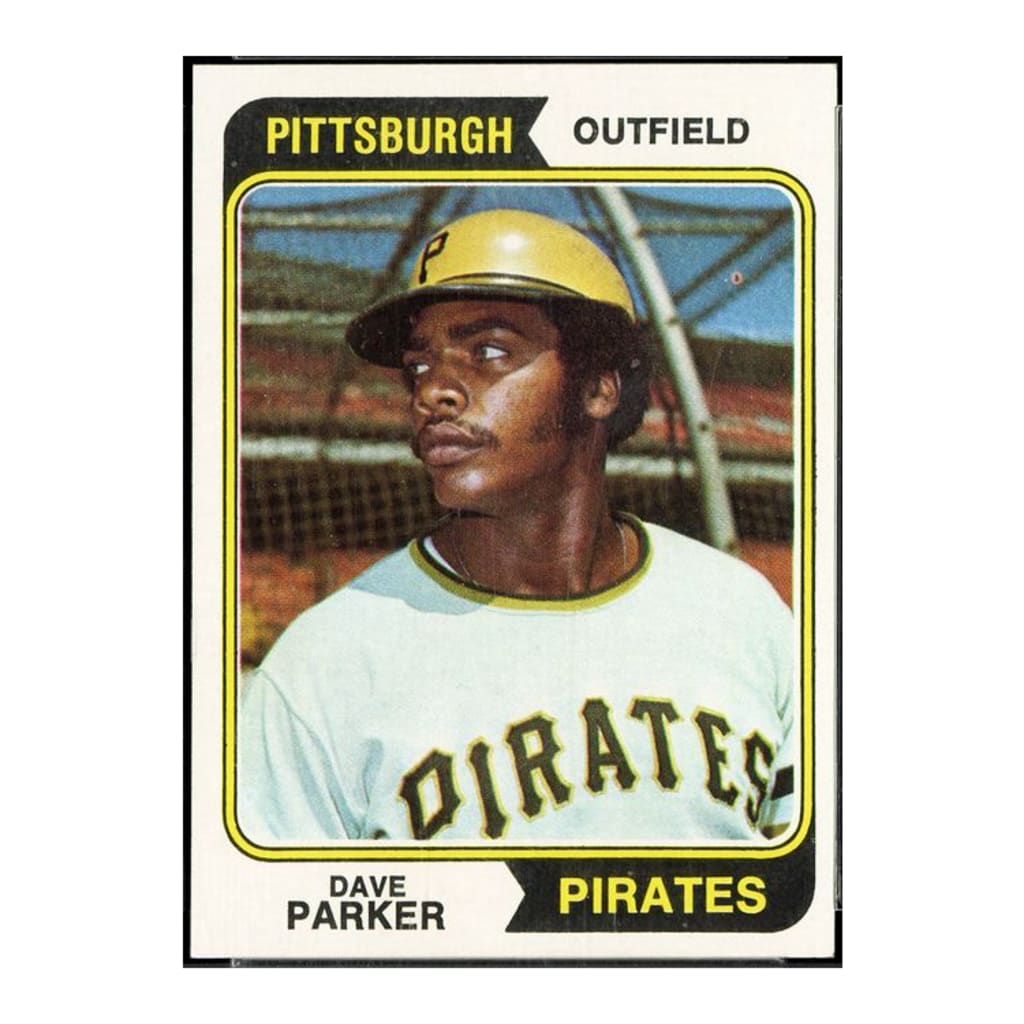
Dave Parker, 1974 Topps
The Pirates' black and gold is all over this card, one of the reasons it looks so good. It's in the "Pittsburgh Pirates" nameplate framing Dave Parker's photo diagonally in the top left and bottom right of the card, in the border around the photo and, of course, on Parker's batting helmet and uniform.
Then there's the photo -- just a great shot of the Cobra, staring off to his right while standing in front of the batting cage on the field.
It's Parker's rookie card, too, from right after he made his big league debut for Pittsburgh as a 22-year-old in 1973.
Parker, who was drafted by the Pirates in 1970, went on to become a star for the storied franchise, winning the 1978 NL MVP Award and leading the '79 "We Are Family" Pirates to a World Series title.
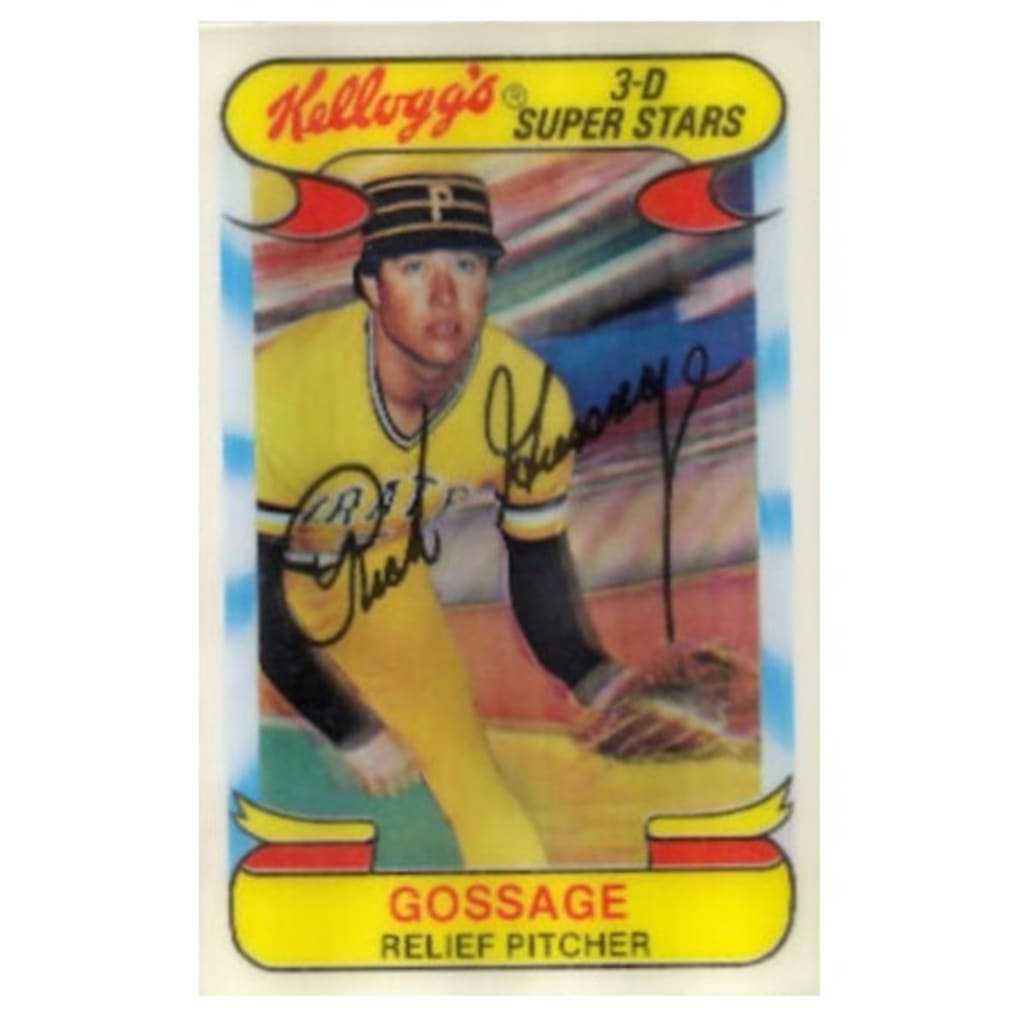
Goose Gossage, 1978 Kellogg's
This card was submitted by MLB.com’s Ed Eagle, who wrote:
“Most people don't even realize that Goose played for the Pirates, but he was a dominant All-Star reliever in 1977. The '78 Topps set had Goose airbrushed into a Yankees uni, so it is rare to see him in one of those amazing Buccos unis of the late '70s.”
As Eagle notes, Rich Gossage spent only one season with the Pirates, so there aren’t many cards that depict him with the club.
Although the reliever extraordinaire was traded from the White Sox to the Pirates in December ’76, Topps’ ‘77 set shows Gossage with Chicago. After Gossage signed with the Yankees the following November, his card in the ‘78 set has him in pinstripes.
But the ’78 Kellogg’s 3-D Superstars set features Gossage clad in Bucs gold and wearing the team’s classic pillbox cap from that era. -- Thomas Harrigan
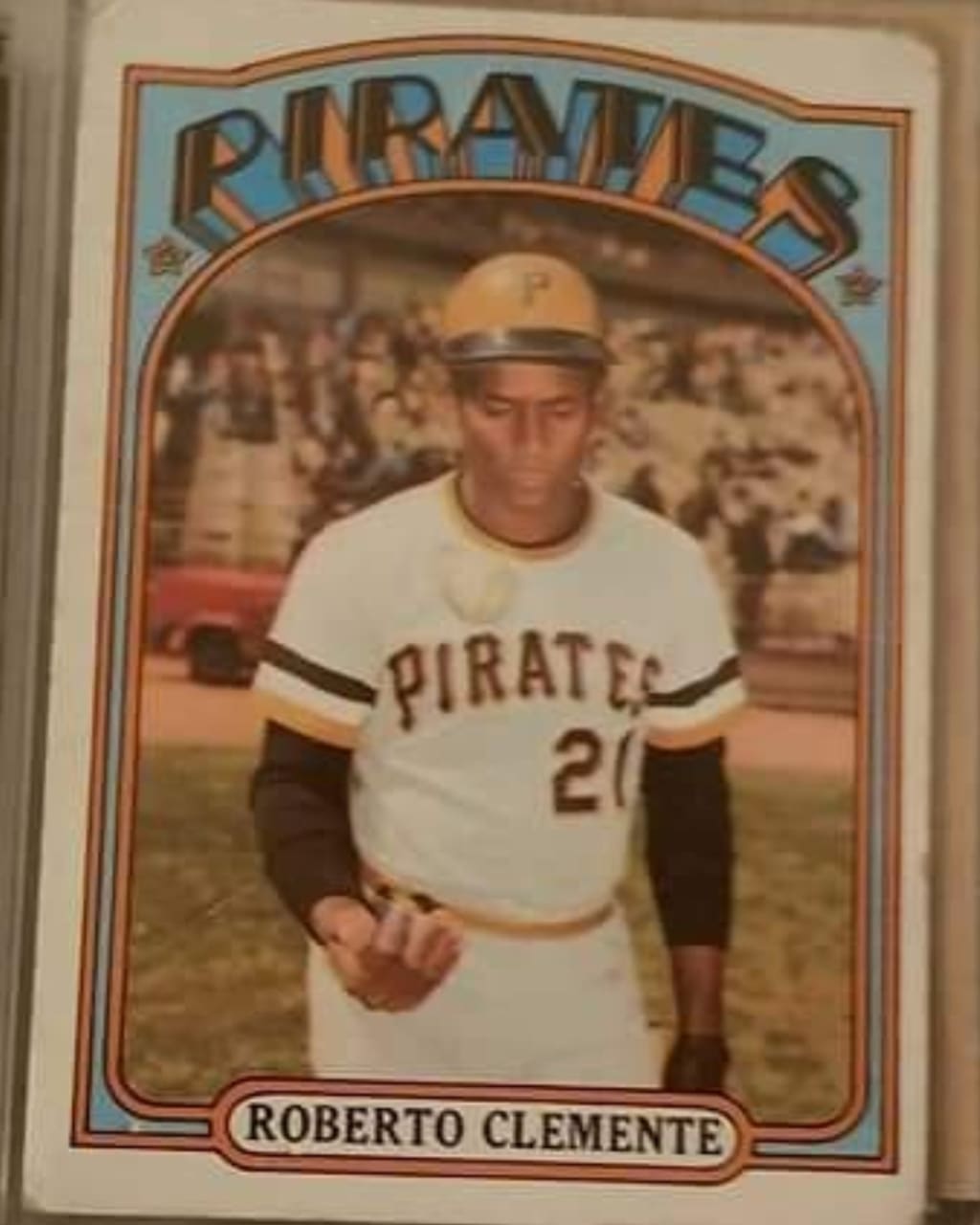
Iconic Pirates card: Roberto Clemente, 1972 Topps
"This is one of Clemente's last baseball cards. It was issued in 1972. It was same year of his passing, which devastated the hearts of baseball fans all over the world. In this card you can almost see Roberto reflecting on his amazing career. You can also see how much he's going to miss that white sphere -- like a premonition -- when departing the game. I was 6 years old when I acquired his card. I still can smell the chunk of hard gum that was stuck to the back of it. I miss Clemente the player, the man, and the humanitarian."
As Franklin R. of Cutler Bay, Fla., so eloquently put it in his response to our survey, Roberto Clemente will forever be remembered as not only one of the greatest baseball players of all time, but also one of the great humanitarians. It was on New Year's Eve in 1972 that Clemente's plane crashed at sea on the way to deliver relief supplies to the victims of a severe earthquake in Nicaragua. Just a few months before, he collected the 3,000th and final hit of his Hall of Fame career.
The Clemente card Franklin and also Stephan L. submitted is an incredible snapshot of both the ballplayer and the man. As Franklin noted, he has a very pensive aura about him, almost as if he's reflecting on his career and life right there on the field at Three Rivers Stadium with the crowd in the seats behind him. It's very fitting and even surreal to look at it now, knowing what happened to Clemente and the legacy he left behind both on and off the field.
For Stephan, this card meant so much to him that he bought it both as a kid and later as an adult when it was stolen.
"I first bought this card in 1987 or 1988 when I was 9 or 10 years old for $3," Stephan wrote. "It was creased but I didn't care because I wanted it. I always had a love for Clemente since I was in second grade and read a story about him in school. Maybe I fell in love with this certain card because of 1987 Topps #313 Turn Back the Clock Roberto Clemente. The year 1987 is when I really started collecting cards. Sadly, the card was stolen when I was 15. I finally replaced it just a few years ago."
The design of the 1972 Topps set is complementary, rather than possibly detracting -- or more likely distracting -- from the photo itself. It's understated but bold, yet not so bold as to overpower the powerful image it bears.
This is a gem, and one of the great submissions in our survey.
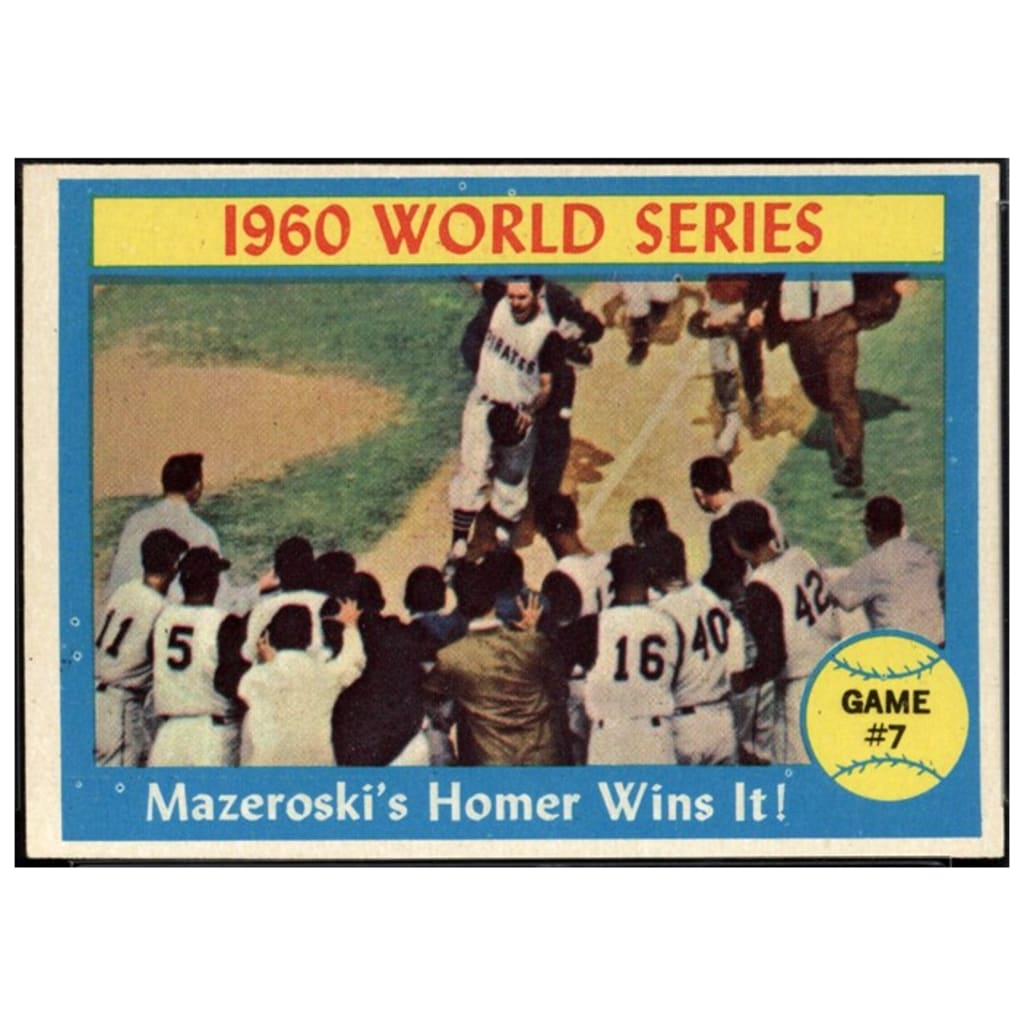
Bill Mazeroski, 1961 Topps
Mazeroski's iconic home run in Game 7 of the 1960 World Series probably helped make baseball fans out of many -- including Mel Greenleaf, who submitted this card depicting the moment as his favorite.
"I was 10 years old and my father took me to my first baseball game at Westgate Park in San Diego that summer," he writes. "I started following baseball, but was not yet a fan. When Game 7 happened on October 7, I stayed home from school because I was 'sick.' My parents had to go to work and I was alone. I watched that game and forever after was a dedicated baseball fan. I have that card autographed by Bill Mazeroski in my collection 60 years later. To this day, I love baseball more than any other sport."
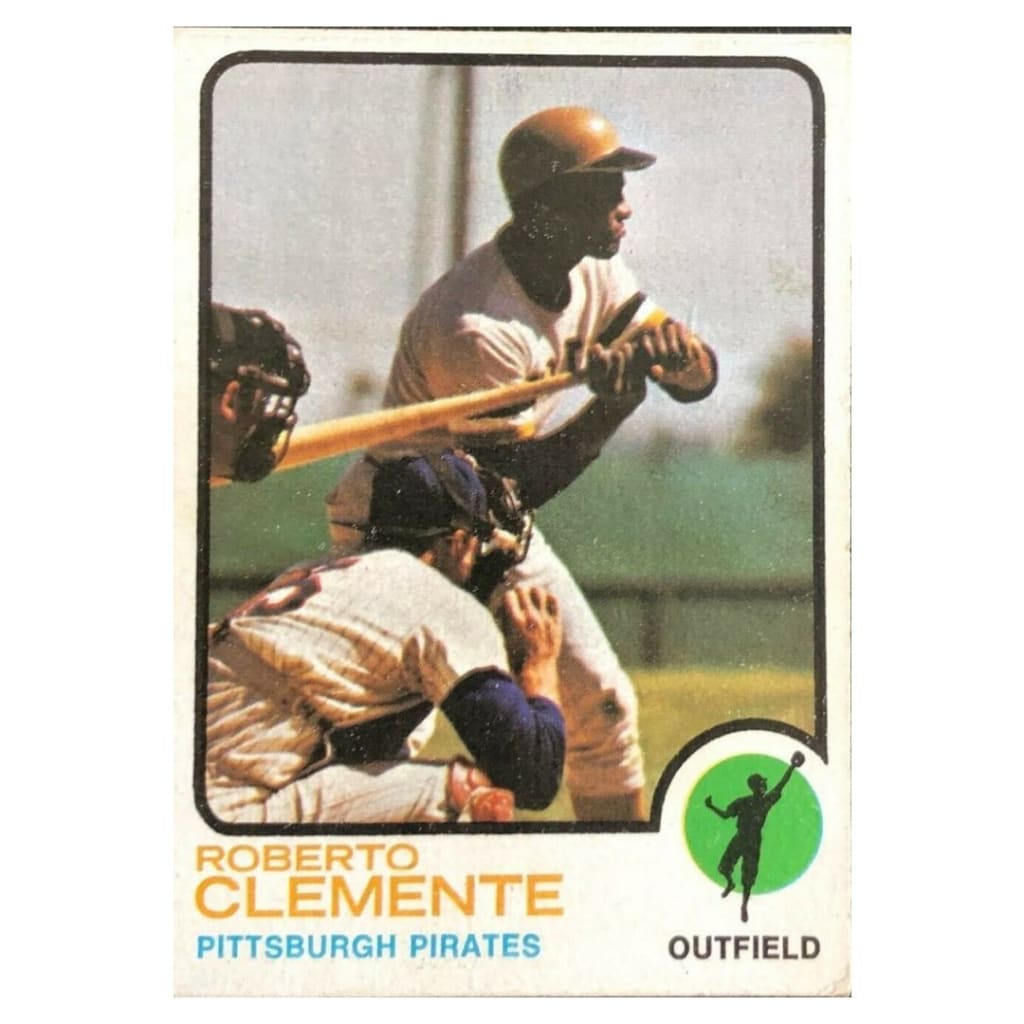
Roberto Clemente, 1973 Topps
MLB celebrated Roberto Clemente Day this week, so this seems like as good of a time as any to highlight another one of the Hall of Famer’s cards.
Clemente’s 1973 Topps card, released after his tragic death in a plane crash on Dec. 31, 1972, while delivering aid to earthquake victims in Nicaragua, was submitted by multiple fans, each of whom paid tribute to Clemente with their corresponding messages.
From David Sanford: “The card came out posthumously after his tragic death, and his career hit total on the back was a perfect 3,000. One could only imagine what he could've done for not only baseball but the world if he had lived.”
From David Dahlstein: “I collected cards from the early '60s to the mid '90s and have since passed them on to my son and grandsons. The Clemente card of course was distributed after his death in the offseason. I always thought the picture looked as if he was shrouded in an almost silhouette form. It seemed to me that Topps wanted to honor him and his sacrifice for his fellow man, and at the same time mourn his loss.”
From Gary Schaefer: “The 1973 Topps Clemente was gifted to me by its original owner. I was 10 years old and it was 1990. The golden age for a young card collector. The gift came from Art, who was 10 years old when he obtained it. Art worked at the pizza place my father ran. He was Hispanic and worked as the busboy for the restaurant. There were a bunch of cards from 1973 and 1974, and most had rubber band lines or even markers for some game Art used to play with them. Then he laid the Clemente on me. He told me about the tragedy of Clemente's death that same year. He described how Clemente played the game and what a great hitter he was and then turned over the card to show how he had reached 3,000 hits exactly in what would be his final season. ... From then on, I never missed a chance to hear or read a story about Clemente.
“Art had become a friend of the family as I grew up. He even tutored me at the restaurant after I had failed freshman year Spanish. A few years after I was out of college and my father could start enjoying his retirement, he got a call from Art. He had enough money saved to open his own pizza restaurant and asked for my father's recipe. The old man didn't just jot down some notes and the recipe, he mentored him through the whole process from whom to order the ingredients from to which equipment to buy to what temperature to keep the doughs. Watching the two of them get the business off the ground, you could see that joy, the real-deal joy while working. I thought about how Clemente set up his charities and used every opportunity to give back. I had seen it from Art when he had given me the card and watched my father do the same for him. Now I get to bring my kids in to see Art and order up pizzas that my father taught him how to make. He's asked about the card every once in a while to see if I still had it. I told him it wasn't going anywhere.
“I know I should use the past tense, but it seems right in this case. Clemente is special. This card is special. And the person who gave it to me is special. Thanks Art.”
Thanks to David S., David D. and Gary for their submissions. -- Thomas Harrigan
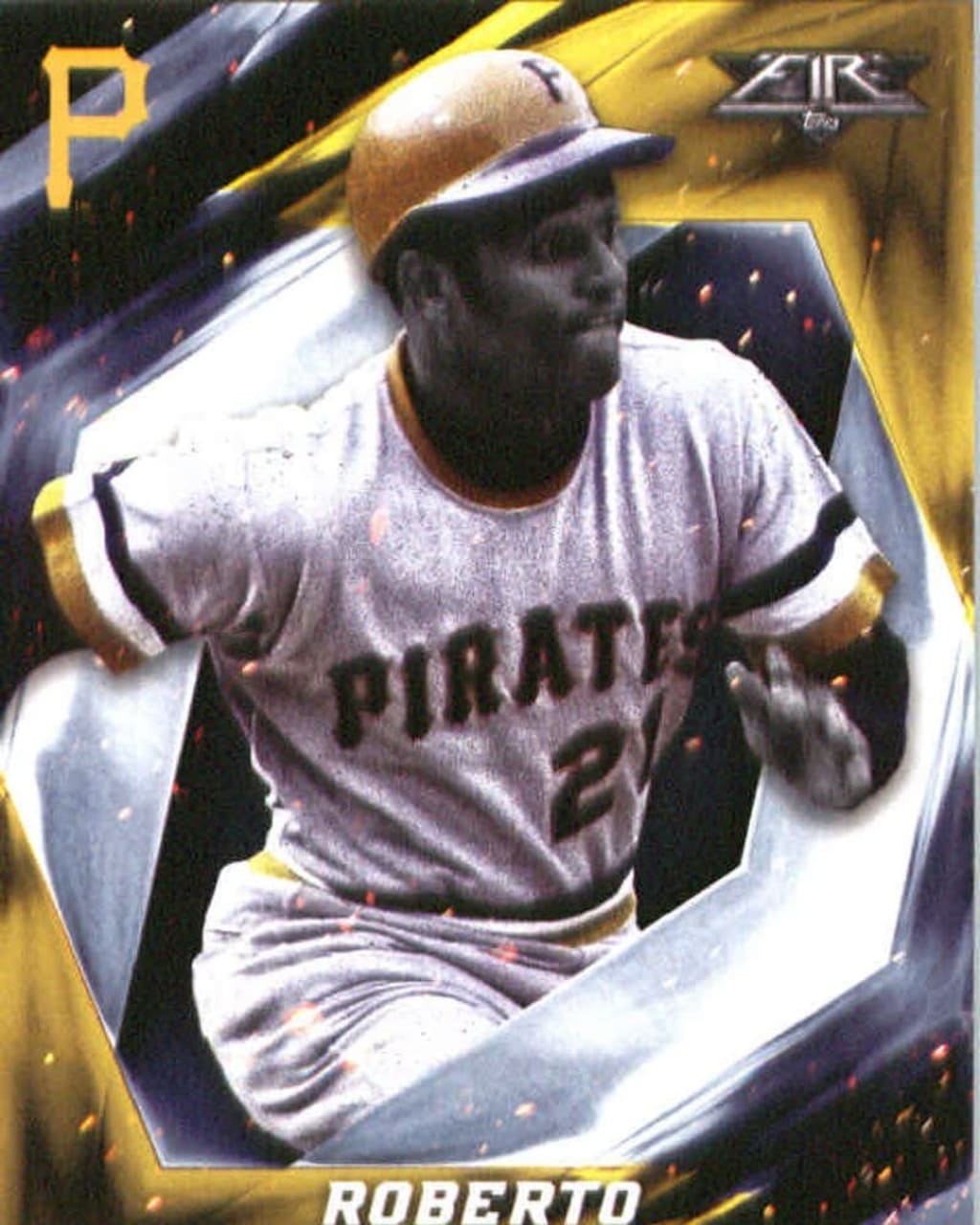
Roberto Clemente, 2017 Topps Fire No. 72
The greatest Pirate of them all on a very cool, limited-issue card. Can't beat that. The Hall of Fame slugger is here depicted showing off his great speed, along with the bold and colorful surroundings Topps Fire is known for.
It's always exciting to pull a rare insert out of a pack of baseball cards, but when it's someone of Clemente's legendary stature, that's another level. -- Manny Randhawa
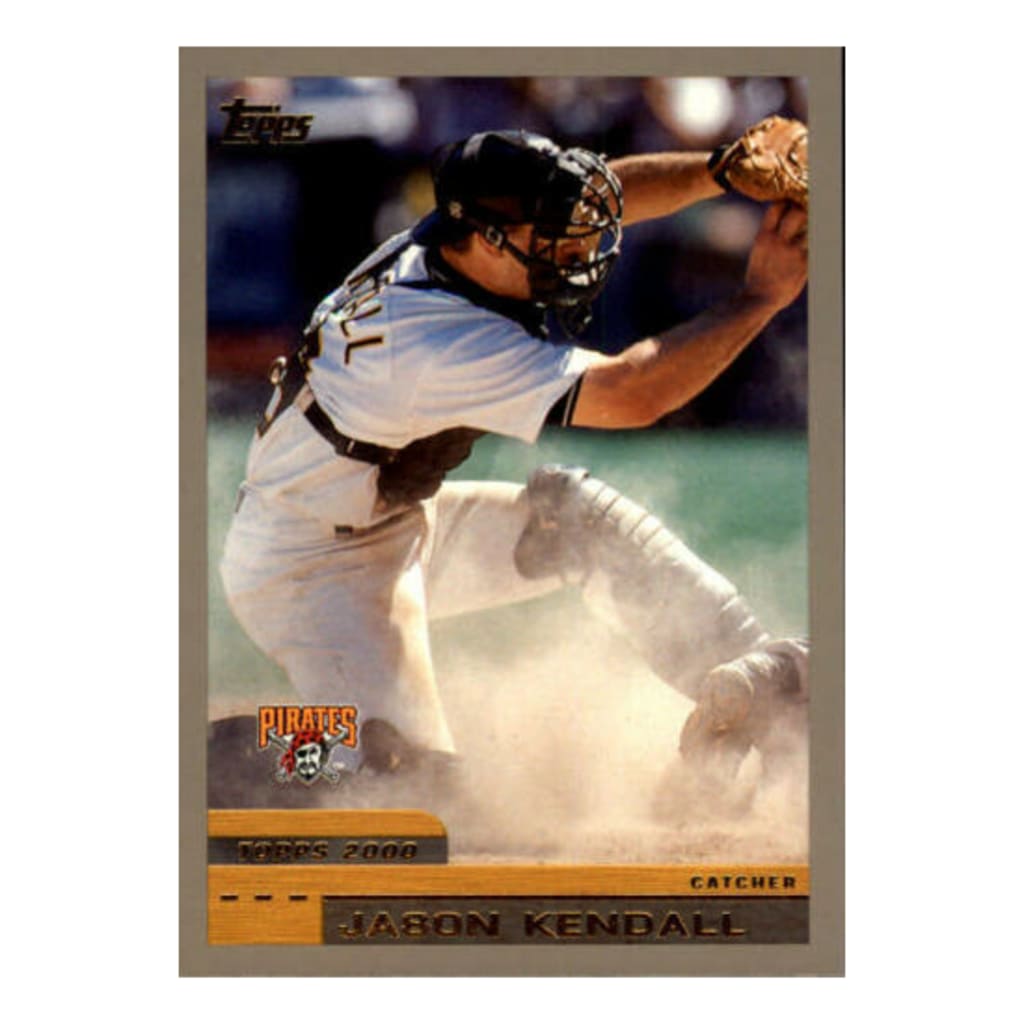
Jason Kendall, 2000 Topps
What a great action shot of the longtime Pirates catcher. Kendall makes a play at the plate, his mitt held aloft as a runner kicks up a cloud of dust in front of him.
The 2000 season was one of Kendall's best in Pittsburgh. The contact-hitting specialist batted .320 with 14 home runs and 22 stolen bases and was an All-Star for the third time in his career.
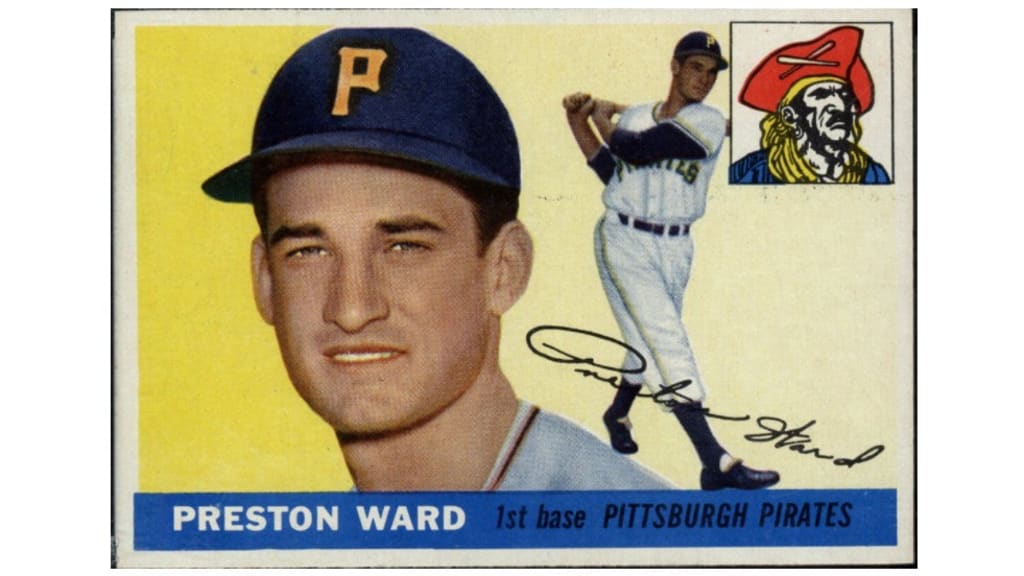
Preston Ward, 1955 Topps
Bruce MacIntosh went above and beyond for our card survey, not only writing in but also making a YouTube video about Ward’s 1955 Topps card.
MacIntosh, who runs a sports card-centric YouTube account, said he recalls coming into possession of the Ward card roughly 50 years ago. MacIntosh added that when MLB.com asked fans to name their favorite baseball cards, he decided to do some research on Ward and put together a video about the card and his career, which covered nine seasons and saw the utilityman hit .253 with 50 home runs.
“Sometime between the age of 8 and 10, about 1970 to 1971, I dug behind the back seat of my father’s 1967 Cadillac Sedan DeVille and pulled out a 1955 Topps No. 95, Preston Ward,” MacIntosh said in his video. “I don’t know who lost that card and when. It could have been my uncle, who would have been in his 20s but was known to collect cards and stamps, or my teenage brother at the time, but I’m fairly confident it was not left during the assembly of the car by GM.
"I’ve kept the card ever since, through multiple bouts of card and comic book collecting -- in the process memorizing the cartoon insert on the back labeled ‘You’re the Ump!’ which quizzed the collector.” -- Thomas Harrigan
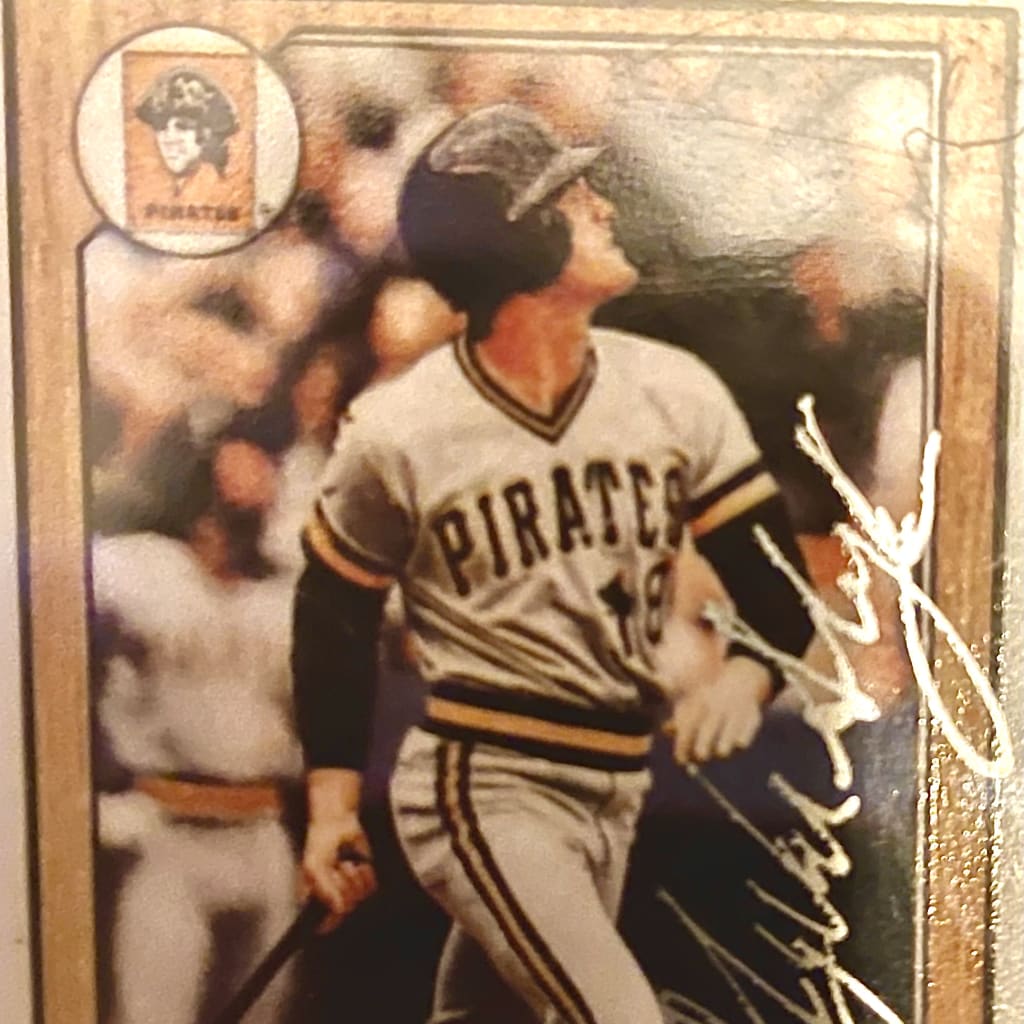
Andy Van Slyke, 1987 Topps Traded
Along with Barry Bonds, Van Slyke was an All-Star slugger in the middle of the Pirates’ lineup in the late 1980s and early ’90s, when Pittsburgh went to three consecutive NL Championship Series.
“I’ve been a Pirates’ fan since I was a kid in the mid ’80s,” wrote Andy C. of Pittsburgh, who submitted this card in our survey. “My first favorite player, Tony Peña, was traded on April Fool’s Day of 1987. My heart was broken...but not for long. One of the players that Pittsburgh got in return not only had my name, but would soon be playing the same position that I played in Little League: center field.
“Nearly 35 years later and Van Slyke is still my all-time favorite player. I even attended a card show a few years back just to have him sign my porcelain beauty. It sits on a shelf, in a case, in my man cave.”
The 1987 Topps Traded set is one of the more iconic in the card company’s history, with the wood grain border especially aesthetically pleasing. Make it porcelain and, well, wow. -- Manny Randhawa
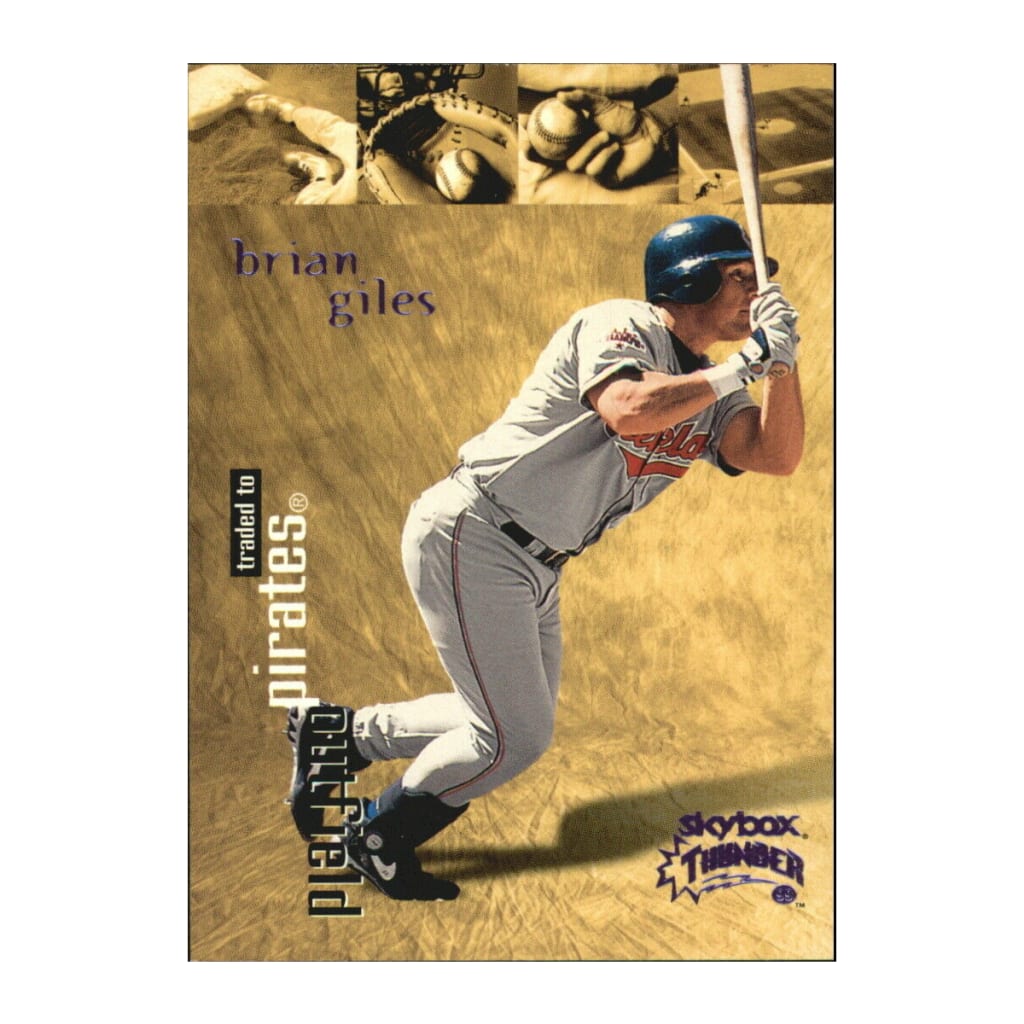
'90s throwback: Brian Giles, 1999 Skybox Thunder
You might remember these '90s Skybox Thunder cards, which have a very distinctive style of background.
This one of Giles comes from the season he was traded from the Indians to the Pirates and broke out in Pittsburgh. Giles batted .315 with 39 home runs and 115 RBIs in '99.
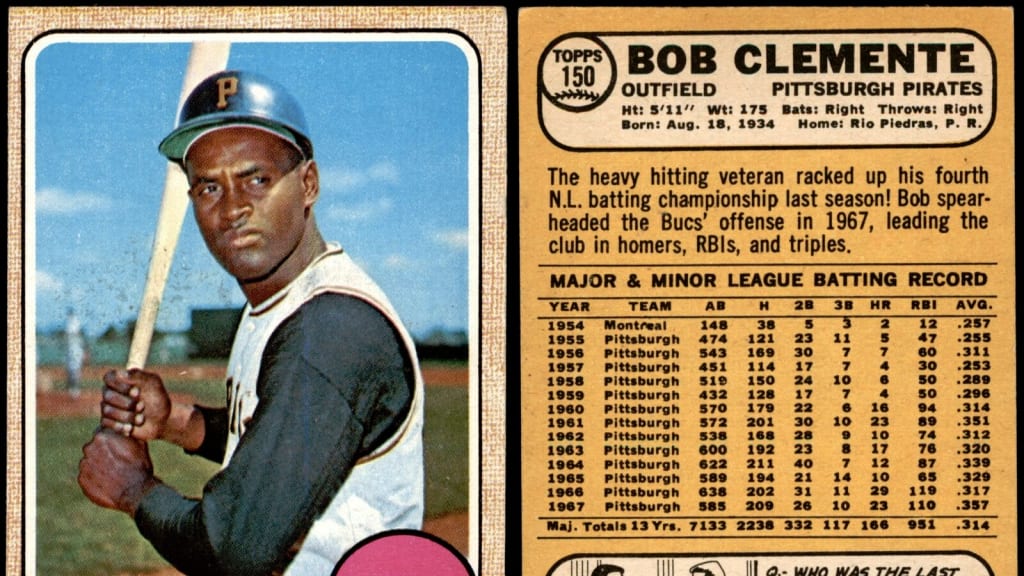
Roberto Clemente, 1968 Topps
Sometimes, baseball cards can become more than just a piece of cardboard with a picture on it. That’s the case for Mark H., who submitted this card of Roberto Clemente from the 1968 Topps set.
“I was a paperboy in 1968 and I would take my money and buy baseball wax packs and ended up with most of that set. Roberto was my favorite player and I would copy his style when I was playing. He was my hero,” Mark wrote in his submission.
“In 1972, I was driving my car through Des Moines, Iowa, when I heard the news of his death. I was devastated,” Mark said. “I wrote his wife Vera a letter explaining to her that I adopted Roberto as my role model … She wrote me back and sent me a poem called ‘The Happy Man.’
“I saw him as a man who had a genuine concern for the well-being of his fellow man and as a result, I studied psychology and then counseling. I got my Master's degree from Drake University and spent the next 30 years working as a therapist for not-for-profit community-based human services organizations.
“I can confidently say that because of Roberto's selfless life, he not only influenced me as an athlete, but as a human being as well.” -- Nick Aguilera
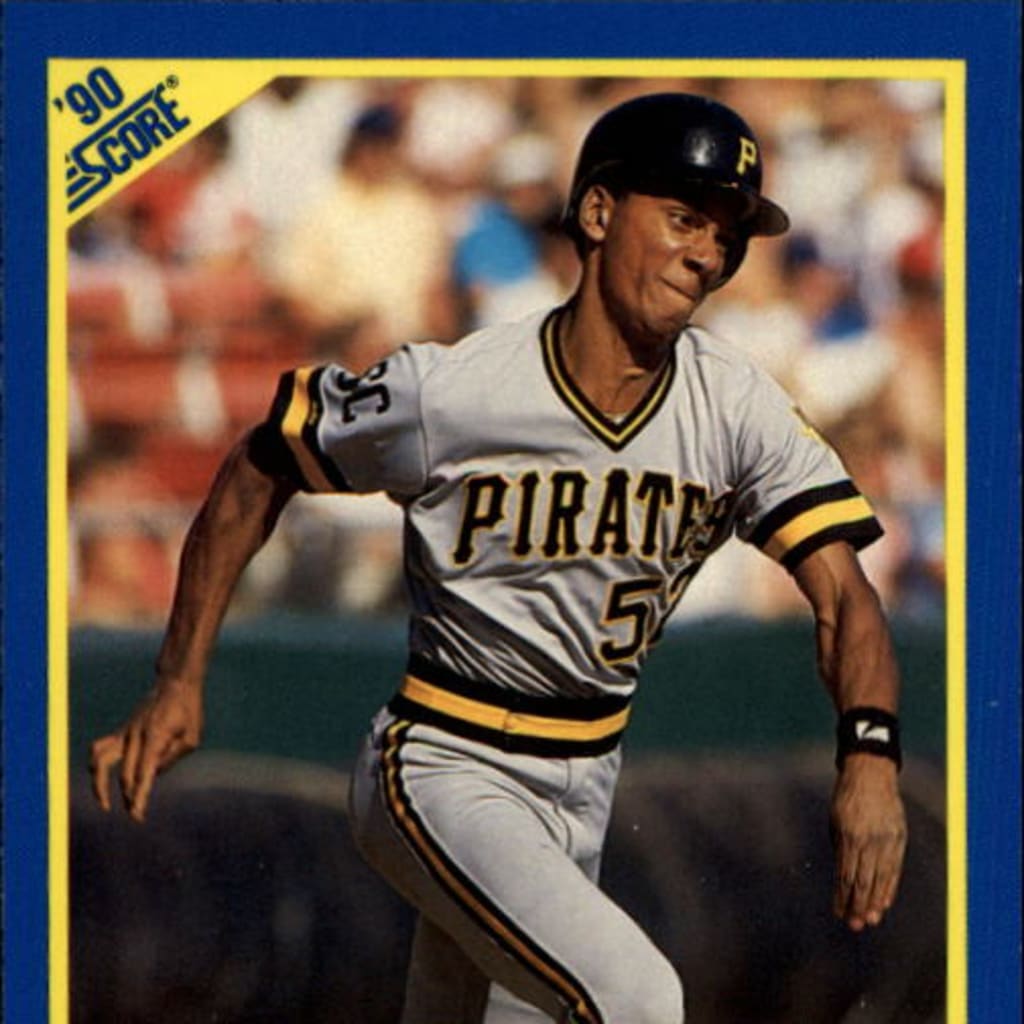
Moises Alou, 1990 Score
Not many people remember -- or even know -- Alou played for the Pirates, a club for whom his uncle, Matty, played from 1966-70. He was actually drafted by Pittsburgh second overall in the January 1986 Draft, and made his MLB debut with the Bucs in '90. If someone wanted to get a snapshot of him in a Pirates uniform, they didn't have long -- the future All-Star outfielder only appeared in two games for Pittsburgh before being traded to the Expos, where he rose to prominence.
By 1994, Alou was one of the best hitters in the game, finishing third in National League MVP Award voting and earning the first of six All-Star selections. He'd go on to help the Marlins win the 1997 World Series and finished with an .885 OPS and 332 home runs over a 17-year career. -- Manny Randhawa
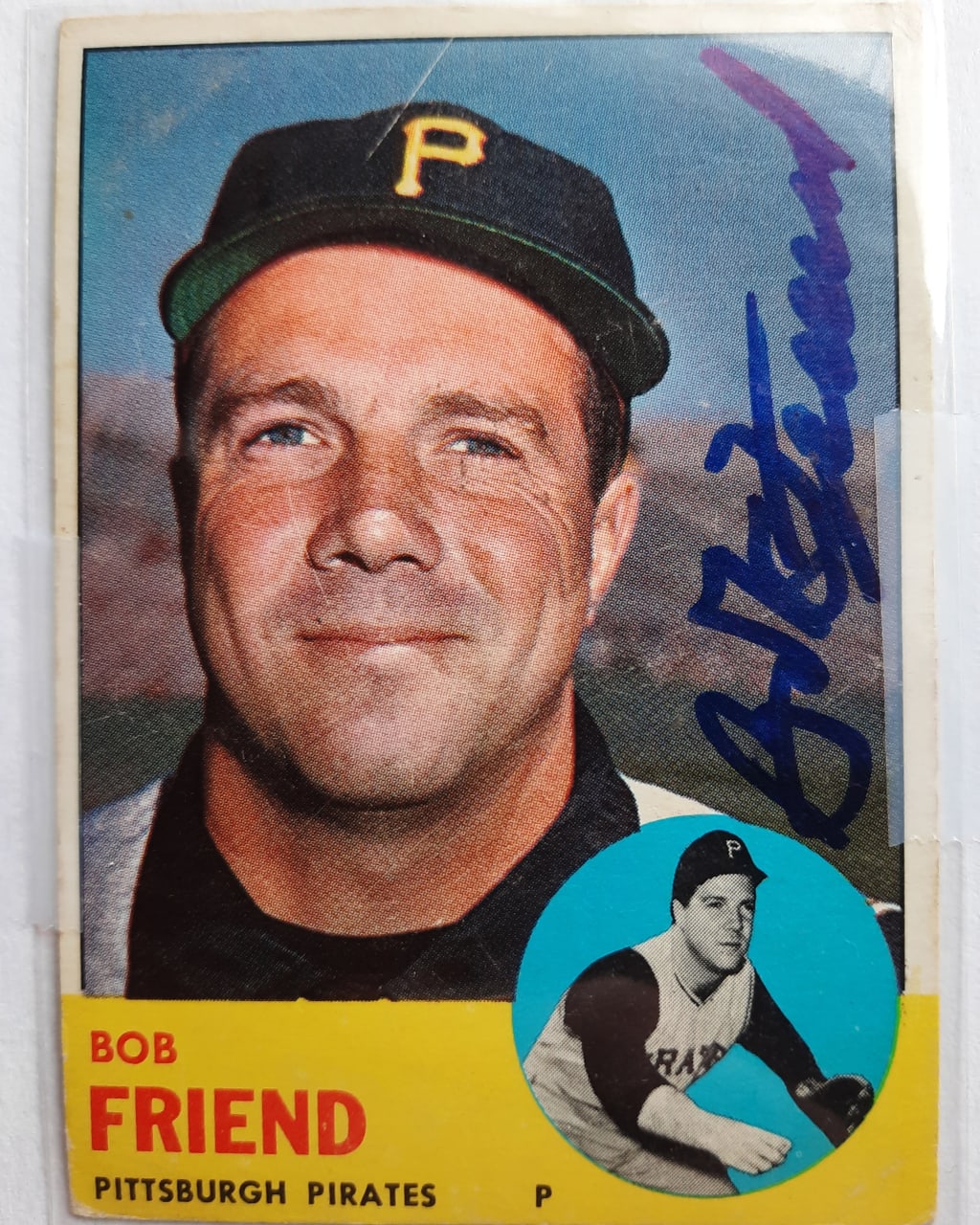
Bob Friend, 1963 Topps
Friend lived up to his name when he met Zac K., the submitter of this week’s card, and helped make some incredible memories at PNC Park.
“Before some home games the Pirates invite back [alumni] to sign autographs. It’s always a thrill to meet these characters, from the legends of the 1960 team to the rowdy ‘We are Family’ crew,” Zac wrote. “One Saturday afternoon Bob Friend, part of that legendary 1960 team that beat the mighty Yankees, was signing autographs… My mom was a huge baseball fan and meeting players always thrilled her. Mr. Friend could not have been more accommodating, signing everything we had and posing for so many pictures.
“I am so thankful baseball gave us an amazing day together and every time I look at this 1963 Topps, I reminisce about that special day.”
Friend spent 16 years in the big leagues, 15 of those with the Pirates. He was a three-time All-Star, won an ERA title in 1955 and, as Zac mentioned, helped guide the Bucs to a World Series victory in 1960. -- Nick Aguilera
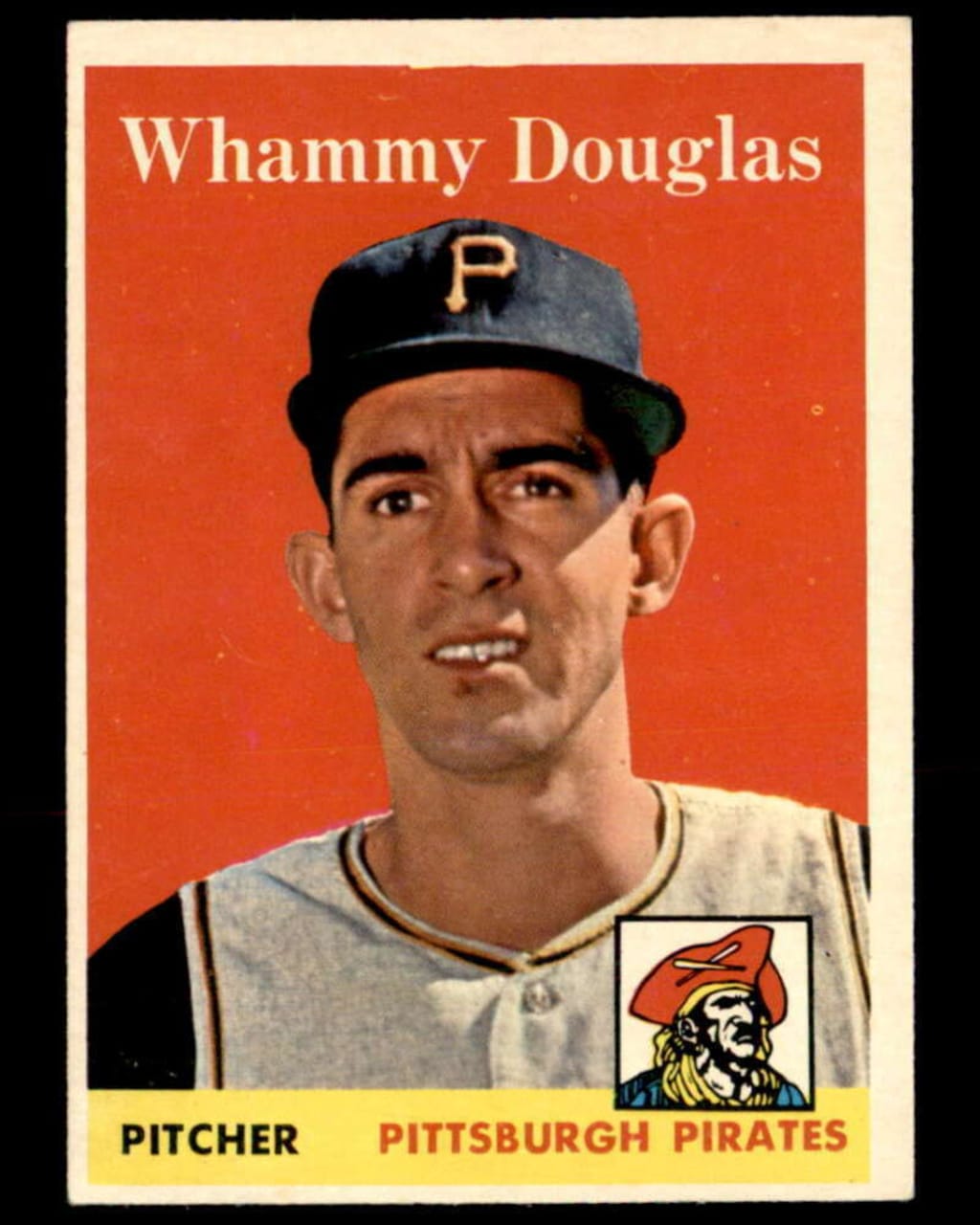
Whammy Douglas, 1958 Topps
The name alone on this card makes it great. But there’s so much to love about this card, as explained by John S., who submitted it in our survey:
“The deer-in-the-headlights look, the cap, the ears, and certainly the name,” Jeff wrote. “ (Also, a great logo, back in the days when baseball cards were baseball cards and not a high-tech work of art.).”
Douglas only made 11 career MLB appearances, all in 1957. He may not have been in the big leagues long, but he certainly did give us a memorable baseball card. -- Manny Randhawa

